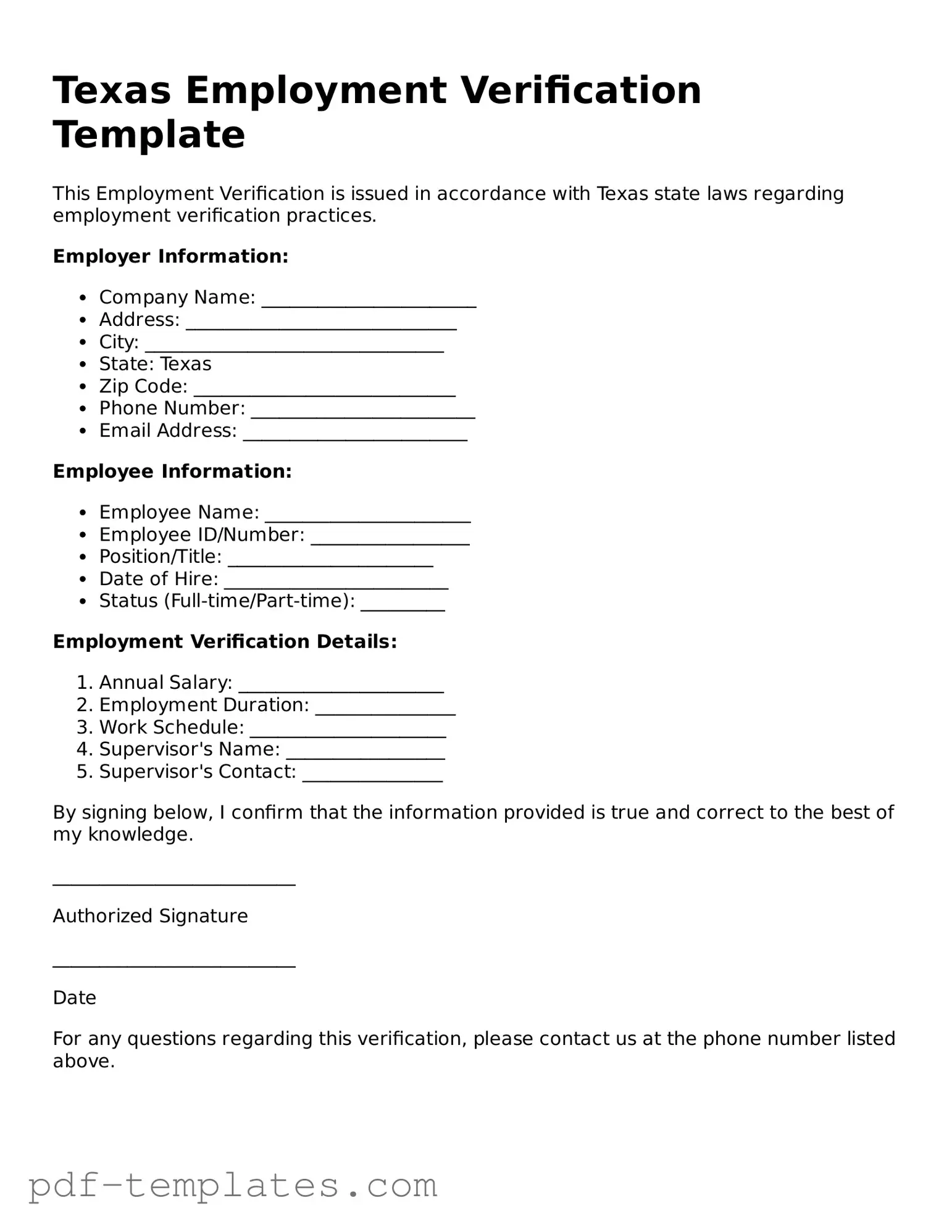The I-9 Employment Eligibility Verification form is a crucial document for employers in the United States, including Texas. Like the Texas Employment Verification form, the I-9 is used to confirm an employee's identity and eligibility to work in the U.S. Both forms require the employee to provide specific identification documents, such as a driver's license or social security card. The I-9 must be completed within three days of the employee's start date, emphasizing the importance of timely verification in both processes.
The W-4 form, or Employee's Withholding Certificate, serves a different purpose but shares similarities in its role within the employment process. While the Texas Employment Verification form focuses on confirming employment eligibility, the W-4 is used to determine the amount of federal income tax withholding from an employee's paycheck. Both forms are essential for ensuring compliance with tax laws and maintaining accurate payroll records.
The Texas Workforce Commission (TWC) New Hire Reporting form is another document that aligns with the Texas Employment Verification form. Employers must report new hires to the TWC within 20 days of their start date. This form helps to track employment for child support enforcement and other state benefits. Like the Employment Verification form, it plays a significant role in maintaining accurate employment records and ensuring compliance with state regulations.
The Form 1099-MISC is used for independent contractors and freelancers, and while it differs from the Texas Employment Verification form in terms of employment classification, both documents are essential for proper record-keeping. The 1099-MISC is issued to report payments made to non-employees, ensuring that tax obligations are met. Both forms contribute to the overall transparency of employment and financial transactions.
The Employee Handbook is not a formal legal document like the Texas Employment Verification form, but it serves as a guide for employees regarding company policies and procedures. Similar to the verification form, the Employee Handbook outlines expectations and responsibilities within the workplace. It helps to create a clear understanding of the employment relationship, promoting a positive work environment.
The Offer Letter is another document that shares a connection with the Texas Employment Verification form. When a candidate is selected for a position, an offer letter is typically issued to outline the terms of employment. This document includes details such as job title, salary, and start date. Both the offer letter and the Employment Verification form are critical in formalizing the employment relationship and ensuring that both parties are on the same page.
The Release of Information form allows employers to obtain consent from employees to share their employment history with third parties. This document is similar to the Texas Employment Verification form in that it facilitates the verification of an employee's work history and qualifications. Both forms help streamline the hiring process and ensure that accurate information is provided to potential employers or agencies.
The State Unemployment Insurance (SUI) form is another important document in the employment landscape. While it focuses on unemployment benefits, it is related to the Texas Employment Verification form in that both are concerned with employment status. Employers must report employee wages and hours worked to the state for unemployment insurance purposes. This ensures that employees have access to benefits if they become unemployed, highlighting the interconnectedness of various employment forms.
The California Transfer-on-Death Deed form is an important legal tool for individuals looking to streamline their estate planning. This document enables property owners to transfer real estate to beneficiaries without the complexities of probate, making it a practical solution for ensuring that one's property is handled according to their wishes after death. For those interested in accessing various forms necessary for such processes, you can find more information at All California Forms, which offers a range of resources to assist in navigating property transfers in California.
Lastly, the Non-Disclosure Agreement (NDA) is a document that, while primarily focused on confidentiality, shares a connection with the Texas Employment Verification form. Both documents are often part of the employment onboarding process. An NDA protects sensitive company information, while the Employment Verification form secures the legitimacy of an employee's status. Together, they help establish a secure and trustworthy working environment.
